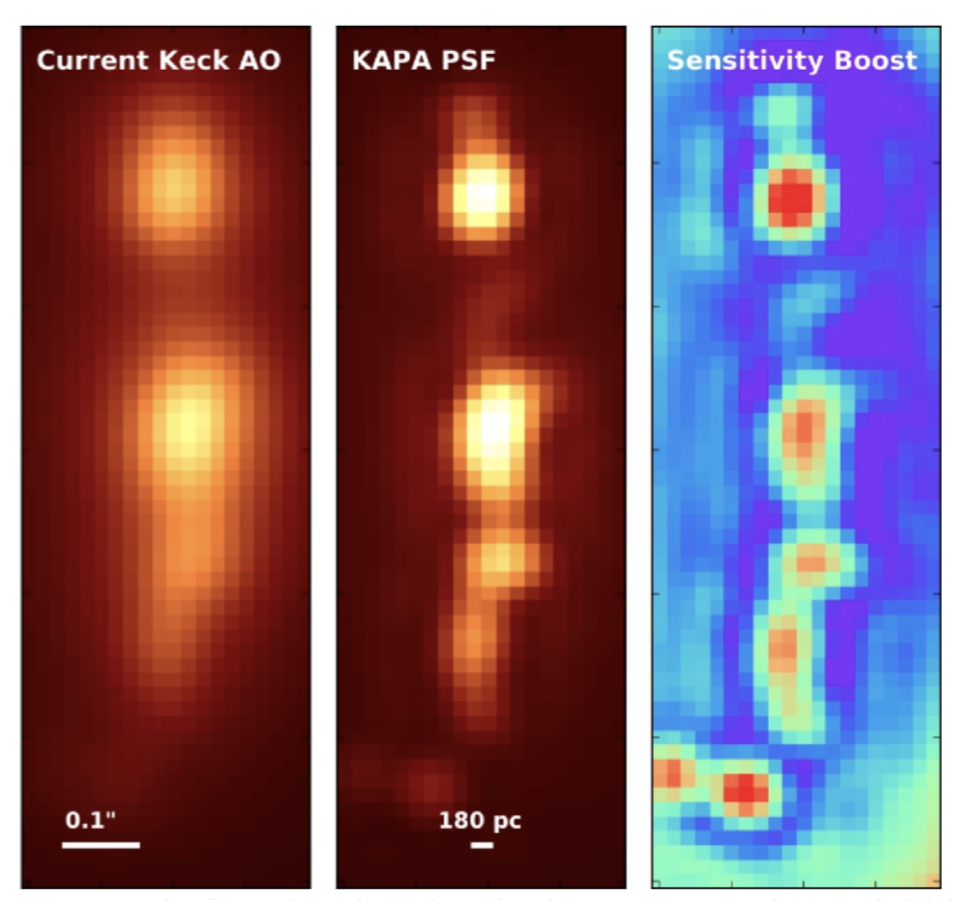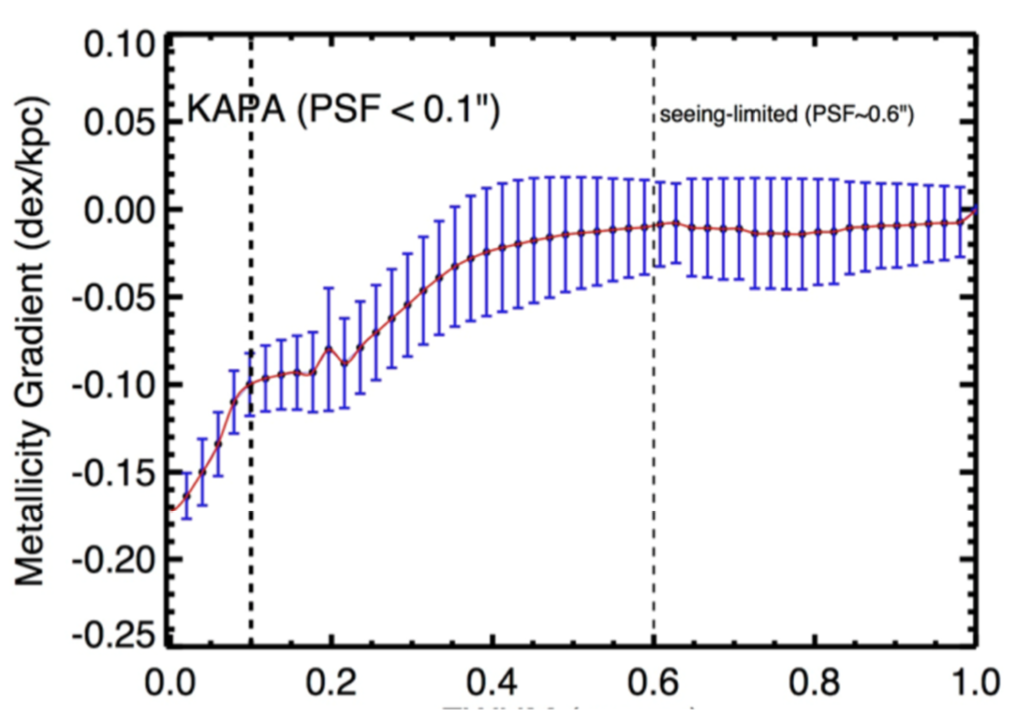Galaxies
Most stars in the universe formed >8 billion years ago, in galaxies at redshift z=1-3. Conditions in these galaxies were very different to those in present galaxies, but observing the interiors of distant galaxies is difficult. The global properties of galaxies can be determined by their spectra, but determining the internal properties requires high resolution observations with integral field spectrometers.
KAPA will provide the high signal-to-noise and angular resolution required to see the the dynamics, chemical abundances, and shocked outflows in individual star forming regions. These internal properties can further help our understanding of galaxy evolution.

Strong gravitational lensing of distant galaxies increases their angular extent, and allows increased spatial resolution. Integral field spectroscopy with KAPA will be able to spatially map the internal motions, gravitational potential energy, and chemical content of galaxies. Gravitational lensing is a rare event, requiring the lens and source to be aligned in the sky. The increase sensitivity and sky coverage of KAPA will triple the number of highly magnified lensed systems that can be observed.

KAPA’s improved Strehl ratio over a large wavelength range will allow more diagnostic emission lines to be mapped over a wider wavelength range. Combined with its ability to resolve HII regions, this will allow KAPA to map the time evolution of metalicity gradients in galaxies.
